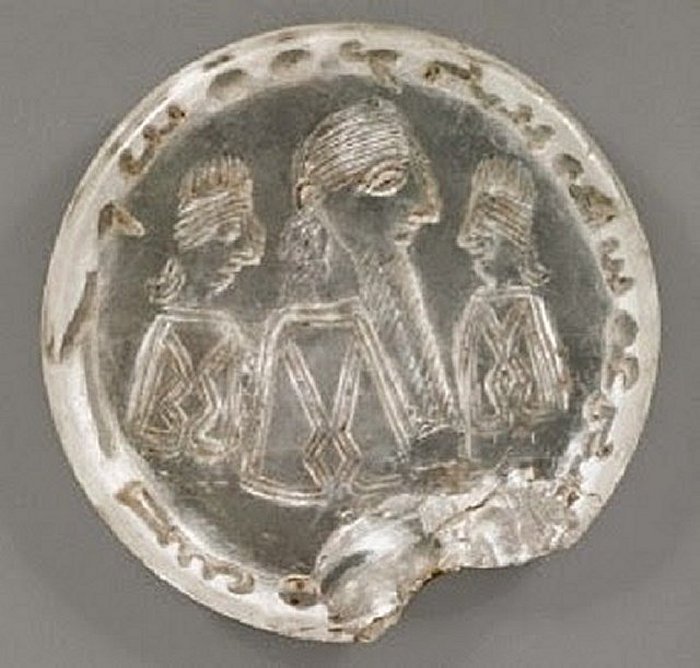Mani: Apostle Of Light And His Ancient Rock Crystal Seal
Ellen Lloyd - AncientPages.com - A major gnostic religion originating in the Sassanid era of Babylonia was founded by the Persian prophet Mani (216-277 CE).

Rock Crystal Sasanian Seal: Mani and two of the Elect priests. The inscription reads, "Mani, the Apostle of Jesus Christ". The seal once used by the prophet Mani to authenticate his writings and correspondence. It is housed in the National Library of France.
Mani, who in the past was considered by scholars to be a Christian heresy, intentionally created a universal church that incorporated Christian, Zoroastrian, and Buddhist concepts.
Today, his religion - Manichaeism - is accepted as an independent religion. His new religion would not simply replace the previous religions but instead represent the fulfillment of what the previous religions had promised but not been able to live up to.
Most of Mani's original writings have been lost, but numerous translations and fragmentary texts have survived and can provide invaluable historical insights.
Image source: National Library of France.
An ancient rock crystal seal once used by the prophet Mani to authenticate his writings and correspondence is now housed in the National Library of France. The artifact has been studied by Zsuzsanna Gulacsi, professor of Comparative Cultural Studies, to provide new interpretations and prepare the seal for further research.
She published her findings in the Bulletin of the Asia Institute.
Prophet Mani was the founder of a religion now called Manichaeism. He preached a universal philosophy that included elements of Zoroastrianism, Buddhism, Christianity, and Hinduism.
The seal is flat on one side and rounded on the other, with a recessed carving on one half, creating a positive image on the opposite side. Mani is flanked by two people, possibly disciples, and an inscription reading 'Mani, the apostle of Jesus Christ' forms the perimeter.
According to Gulacsi, Mani stood out among the religious leaders of the time because he wrote his doctrine, compared to Jesus, Mohammad, and the historical Buddha, who were not known to read or write.
He believed other religious leaders had their teachings distorted because they could not write themselves.
"Their disciples did not have the capacity of a prophet, whose clarity of religious insight was believed to surpass that of ordinary human beings," said Gulacsi, who believes that Mani wore his crystal seal as a pendant, a practice of that time.
"...his seven canonical works included the Treasure of Life, Living Gospel, Book of Giants, Book of Mysteries, Letters, Psalms and Prayers [all in Syriac Aramaic], and the Shabuhragân [in Persian]). Jesus, he said, came to the West, and after his death, his disciples wrote down his words.
Zoroaster came to Persia but did not write books, though his disciples remembered and wrote down his words after his death. And, when the Buddha came, he preached much wisdom and established churches, but he did not write anything, and, again, it was his disciples who wrote down his words after his death..." according to Judith Weingarten's blog.
The rock crystal is flat on one side and rounded on the other, with a recessed carving on one half, creating a positive image on the opposite side.
The Mani's seal is a unique surviving artifact about the size of a quarter; the thin quartz seal was likely once encased in gold to facilitate its use.
In 274, Mani died in prison after being persecuted for his religious teachings. His belongings were likely passed to his successor, but the crystal seal's fate is only known once it turned up in Paris in 1896, where it was purchased and housed in the gemstone section of the National Library of France.
Despite its historical significance, Mani's engraved crystal seal had escaped attention until recently.
Written by - Ellen Lloyd – AncientPages.com
Updated on December 17, 2023
Copyright © AncientPages.com All rights reserved. This material may not be published, broadcast, rewritten or redistributed in whole or part without the express written permission of AncientPages.com
More From Ancient Pages
-
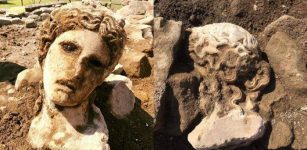 Magnificent 2,000-Year-Old Marble Head Of God Dionysus Discovered In Rome
Archaeology | Jun 17, 2019
Magnificent 2,000-Year-Old Marble Head Of God Dionysus Discovered In Rome
Archaeology | Jun 17, 2019 -
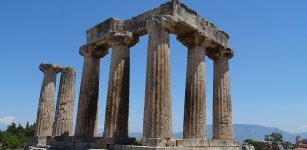 Ancient Greeks Had Knowledge Of Advanced Lifting Technology Long Before Modern Cranes Were Invented
Ancient Technology | Aug 29, 2019
Ancient Greeks Had Knowledge Of Advanced Lifting Technology Long Before Modern Cranes Were Invented
Ancient Technology | Aug 29, 2019 -
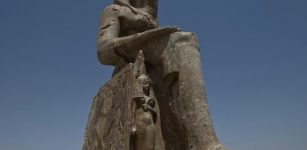 Remarkable Massive Statues Of Pharaoh Amenhotep III Discovered In Luxor
Archaeology | Mar 25, 2014
Remarkable Massive Statues Of Pharaoh Amenhotep III Discovered In Luxor
Archaeology | Mar 25, 2014 -
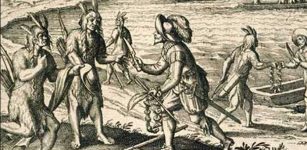 Indigenous People In Oconee Valley Remained In Southeastern US For Nearly 150 Years
Archaeology | Jul 15, 2020
Indigenous People In Oconee Valley Remained In Southeastern US For Nearly 150 Years
Archaeology | Jul 15, 2020 -
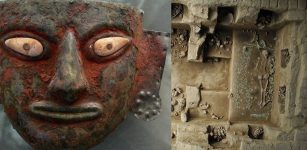 Lady Cao – Moche Queen Who Re-Wrote Ancient History
Civilizations | Jan 12, 2018
Lady Cao – Moche Queen Who Re-Wrote Ancient History
Civilizations | Jan 12, 2018 -
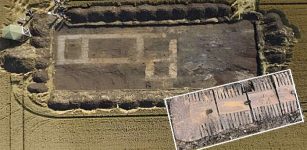 Lincolnshire’s Prehistoric Henge And A Sacred Site Dating Back Hundreds Of Years
Archaeology | Apr 6, 2024
Lincolnshire’s Prehistoric Henge And A Sacred Site Dating Back Hundreds Of Years
Archaeology | Apr 6, 2024 -
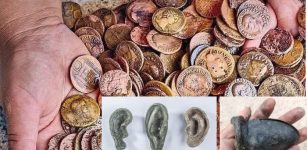 Extraordinary Etruscan And Roman Treasure Trove Unearthed In San Casciano dei Bagni, Italy
Archaeology | Aug 12, 2022
Extraordinary Etruscan And Roman Treasure Trove Unearthed In San Casciano dei Bagni, Italy
Archaeology | Aug 12, 2022 -
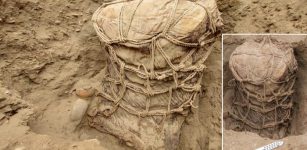 A 500-Year-Old Funerary Bundle And Pottery Probably Belonging To Ychsma Culture – Unearthed Near Lima, Peru
Archaeology | May 22, 2023
A 500-Year-Old Funerary Bundle And Pottery Probably Belonging To Ychsma Culture – Unearthed Near Lima, Peru
Archaeology | May 22, 2023 -
 On This Day In History: American General Benedict Arnold Commits Treason – On Sep 21, 1780
News | Sep 21, 2016
On This Day In History: American General Benedict Arnold Commits Treason – On Sep 21, 1780
News | Sep 21, 2016 -
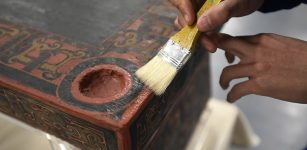 2,500-Year-Old ‘Dragon Bed’ Restored By Chinese Archaeologists
Archaeology | Jan 21, 2018
2,500-Year-Old ‘Dragon Bed’ Restored By Chinese Archaeologists
Archaeology | Jan 21, 2018 -
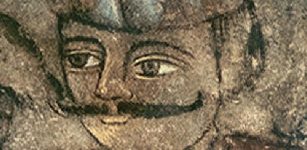 On This Day In History: Vlad II Known As Vlad Dracul (‘Vlad The Dragon’) Was Born – On August 30, 1400
News | Aug 30, 2016
On This Day In History: Vlad II Known As Vlad Dracul (‘Vlad The Dragon’) Was Born – On August 30, 1400
News | Aug 30, 2016 -
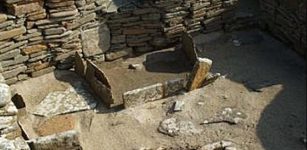 First Bathrooms Appeared Around 8,000 B.C In Scotland
Ancient History Facts | Dec 11, 2016
First Bathrooms Appeared Around 8,000 B.C In Scotland
Ancient History Facts | Dec 11, 2016 -
 The Wild Hunt And The Danger Of Seeing The Phantom Army Of Odin
Featured Stories | Dec 8, 2024
The Wild Hunt And The Danger Of Seeing The Phantom Army Of Odin
Featured Stories | Dec 8, 2024 -
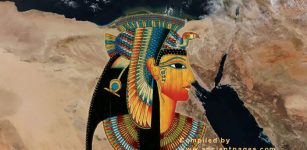 Effects Of The Volcanic Eruption In Alaska Rippled Through Ancient Egypt During Cleopatra’s Reign
Archaeology | Jul 26, 2022
Effects Of The Volcanic Eruption In Alaska Rippled Through Ancient Egypt During Cleopatra’s Reign
Archaeology | Jul 26, 2022 -
 Child Finds Impressive 1,800-Year-Old Ring Engraved With Goddess Minerva On Mount Carmel, Israel
Archaeology | Jul 17, 2024
Child Finds Impressive 1,800-Year-Old Ring Engraved With Goddess Minerva On Mount Carmel, Israel
Archaeology | Jul 17, 2024 -
 The Hidden Face Of The Elusive Master
Featured Stories | Jun 8, 2018
The Hidden Face Of The Elusive Master
Featured Stories | Jun 8, 2018 -
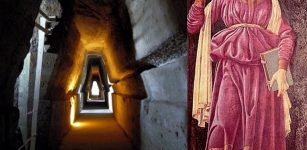 Mysterious Cave Of Prophetess Cumaean Sibyl – Ancient Portal To The Underworld
Featured Stories | Dec 25, 2017
Mysterious Cave Of Prophetess Cumaean Sibyl – Ancient Portal To The Underworld
Featured Stories | Dec 25, 2017 -
 3,000-Year-Old Nimrud Lens Could Re-Write The History Of Science – Was The World’s Oldest Telescope Developed By Ancient Assyrian Astronomers?
Ancient Technology | Oct 19, 2014
3,000-Year-Old Nimrud Lens Could Re-Write The History Of Science – Was The World’s Oldest Telescope Developed By Ancient Assyrian Astronomers?
Ancient Technology | Oct 19, 2014 -
 Ancient Site Tres Zapotes Offers Evidence The Olmecs Practiced Shared Governance
Archaeology | May 30, 2017
Ancient Site Tres Zapotes Offers Evidence The Olmecs Practiced Shared Governance
Archaeology | May 30, 2017 -
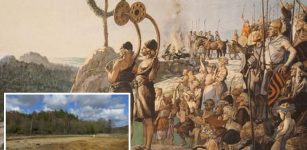 82 Mysterious 3,000-Year-Old Pits Discovered In Sweden – Bronze Age Cooking Pits And Ancient Ceremonial Center?
Archaeology | Jun 13, 2017
82 Mysterious 3,000-Year-Old Pits Discovered In Sweden – Bronze Age Cooking Pits And Ancient Ceremonial Center?
Archaeology | Jun 13, 2017

